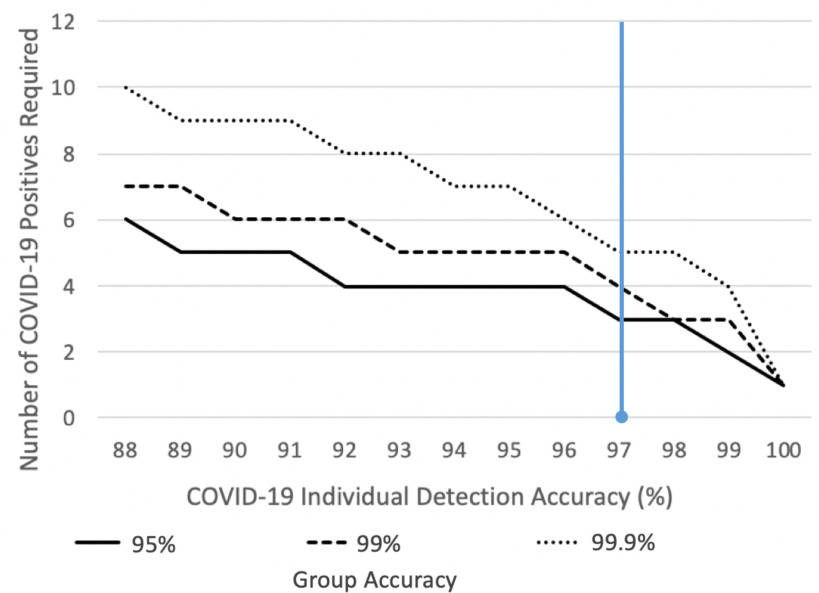Fig. 4.
In cases where there are very few infected individuals, a group pre-screening tool can be derived from the COVID-19 OVBM model to accurately alert infected groups while avoiding false-positives as illustrated in the graph. With the current accuracy, shown in blue, a threshold of 3 positives in a group of 25 are required so that only 1% of groups of 25 with no cases are falsely labelled and therefore unnecessarily tested via expensive biological tests. In other words, in a campus with 2500 yet uninfected students, only 25 will have to be tested with biological methods until 3 people in a class of 25 catch the virus, in which case the screening will alert of the outbreak. The x-axis shows how the required number of positives in a group, 3 in this example, drops if the COVID-19 model accuracy improves. Each line shows percent of groups of 25 people falsely tagged with COVID-19 with a minimum number of COVID-19 positives in it. As a second example, assume a country like New Zealand, with very few COVID-19 cases, wanted to screen for new early outbreaks and to do so tested 50M inhabitants using a PCR or serology test with 99% specificity. The country would purchase 50M tests and obtain 500 000 false-positives. Meanwhile, assume a group test yielding a 99.9% test accuracy was used, i.e. requiring 5 positives instead of 3 in the example above. Of the, 2M groups of 25, only 2000 groups would be falsely tagged or 50 000 people. Hence, 0.1% of the cost and 0.1% of the false positives otherwise. The value of this group testing tool is that it enables organizations and countries to pre-screen its whole population daily, and rapidly locate incipiently infected groups, without the necessity of using an expensive PCR or serology test on each inhabitant.

